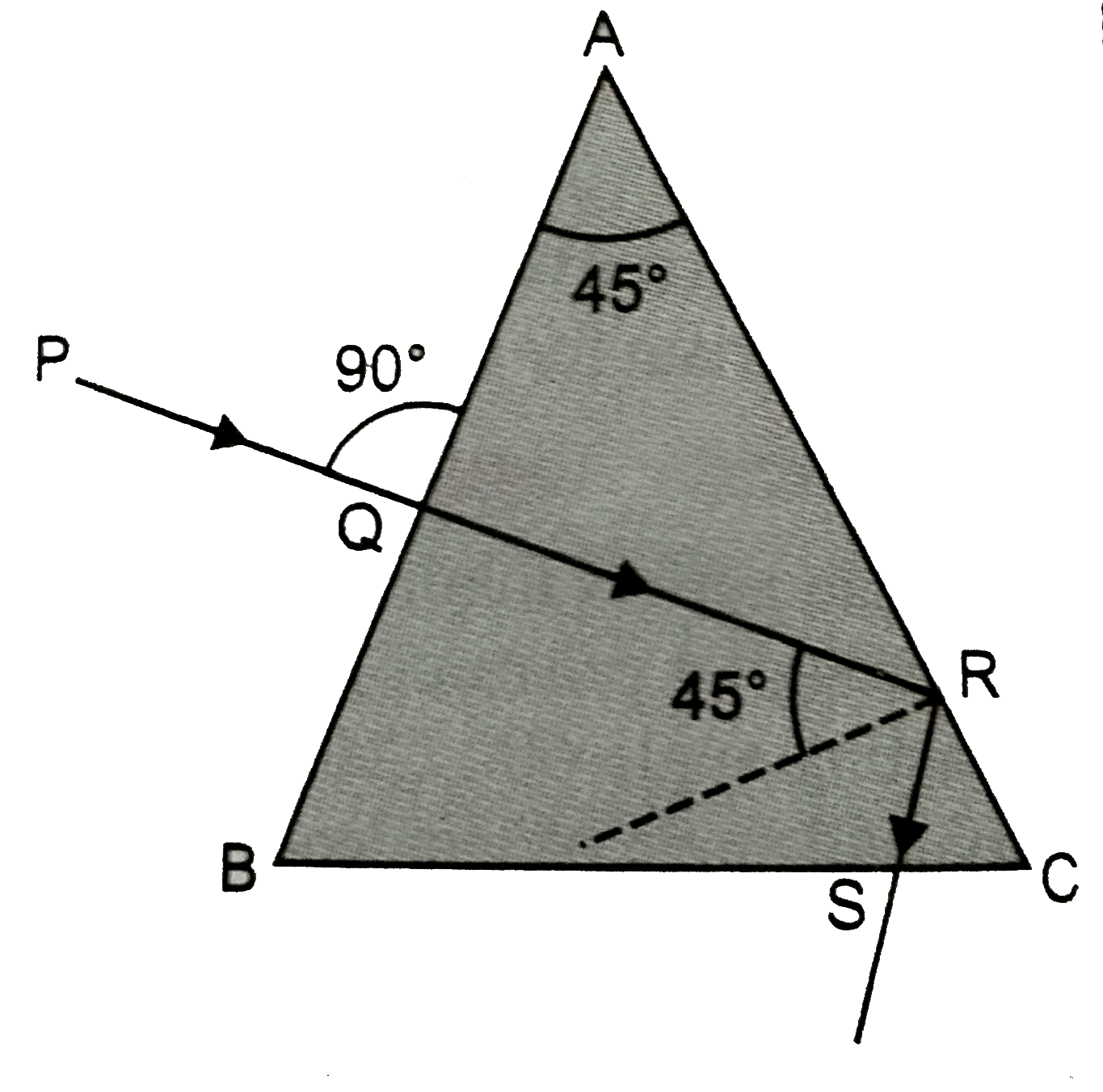If the critical angle for the material of a prism is C and the angle of the prism is A, then there will be no emergent ray when
after deviation it will emerge from the second refacting surface
it is totally reflected on the second surface and emeges out perpendicularly from third surface in air .
it is totally reflected from the second and third refracting surface and finally emerges out from the first surface
it is totally reflected from all the three sides of prism and never emerges out
The correct Answer is:B
Topper's Solved these Questions
- REFRACTION OF LIGHT BOOK - TARGET PUBLICATIONCHAPTER - REFRACTION OF LIGHT EXERCISE - COMPETITIVE THINKING
80 Videos
- REFRACTION OF LIGHT BOOK - TARGET PUBLICATIONCHAPTER - REFRACTION OF LIGHT EXERCISE - EVALUATION TEST
12 Videos
- REFRACTION OF LIGHT BOOK - TARGET PUBLICATIONCHAPTER - REFRACTION OF LIGHT EXERCISE - EVALUATION TEST
12 Videos
- RAY OPTICSBOOK - TARGET PUBLICATIONCHAPTER - RAY OPTICSEXERCISE - EVALUATION TEST
14 Videos
- SCALARS AND VECTORSBOOK - TARGET PUBLICATIONCHAPTER - SCALARS AND VECTORSEXERCISE - Evaluation Test
19 Videos
Similar Questions
As shown in Fig. PQ is a ray incident on prism ABC. Show the corresponding refracted and emergent rays. The critical angle for the material of the prism is 45∘. What is refractive index of the material of prism ?
 .
.
View Solution(a) If the refracting angle of a prism is 60∘ and the minimum deviation is 30∘, then find the angle of incidence.
(b) A ray of light passes through an equilateral prism such that the angle of emergence is equal to the angle of incidence and each is equal to 3/4th of the angle of prism. Find the angle of deviation.
(c) The refracting of a prism is A and the refractive index of the material of the prism is cotA/2. Find the angle of deviation.
(d) The angle of a prism is 60∘. What is the angle of incidence for minimum deviation? The refractive index of the material of the prism is √2.
View Solution
Knowledge Check
The critical angle for the material of a prism is 45∘ and its refractive angle is 30∘. A monochromatic ray goes out perpendicular to the surface of emergence from the prism. Then the angle of incidence on the prism will be
A60∘B75∘C45∘D30∘A ray of light is incident on one face of a prism at an angle of 50∘ with the normal . The ray is deviated by the prism through 42∘ . What is the angle of the prism , if the angle of emergence is 51∘ ?
A56∘B57∘C58∘D59∘A ray of light is incident on one of the faces of the angle prism with an angle 40∘ with the surface. The angle of the prism is 60∘. The emergent ray is deviated through an angle 38∘. The angle of emergence is
A38∘B48∘C52∘D58∘
A ray of light is incident on one of the faces of the angle prism with an angle 40∘ with the surface. The angle of the prism is 60∘. The emergent ray is deviated through an angle 38∘. The angle of emergence is
View SolutionA ray of light is inclined to one face of a prism at an angle of 50∘. The angle of prism is 60∘ and the ray deviates through an angle which the emergent ray makes with second face of the prism.
View SolutionA ray of light incident at an angle θ on a refracting face of a prism emerges from the other face normally. If the angle of the prism is 5∘ and the prism is made of a material of refractive index 1.5, the angle of incidence is.
View SolutionA ray is incident at an angle of incidence i on one surfcae of a small angle prism (with angle of prism A) and emerges normally from opposite surface. If refractive index of material of prism is μ then the angle of incidence is nearly equal to
View SolutionA ray of light takes grazing incidence on the first face of a prism having critical angle C. Find the angle of prism is after refraction ray does not emerge out.
View Solution
